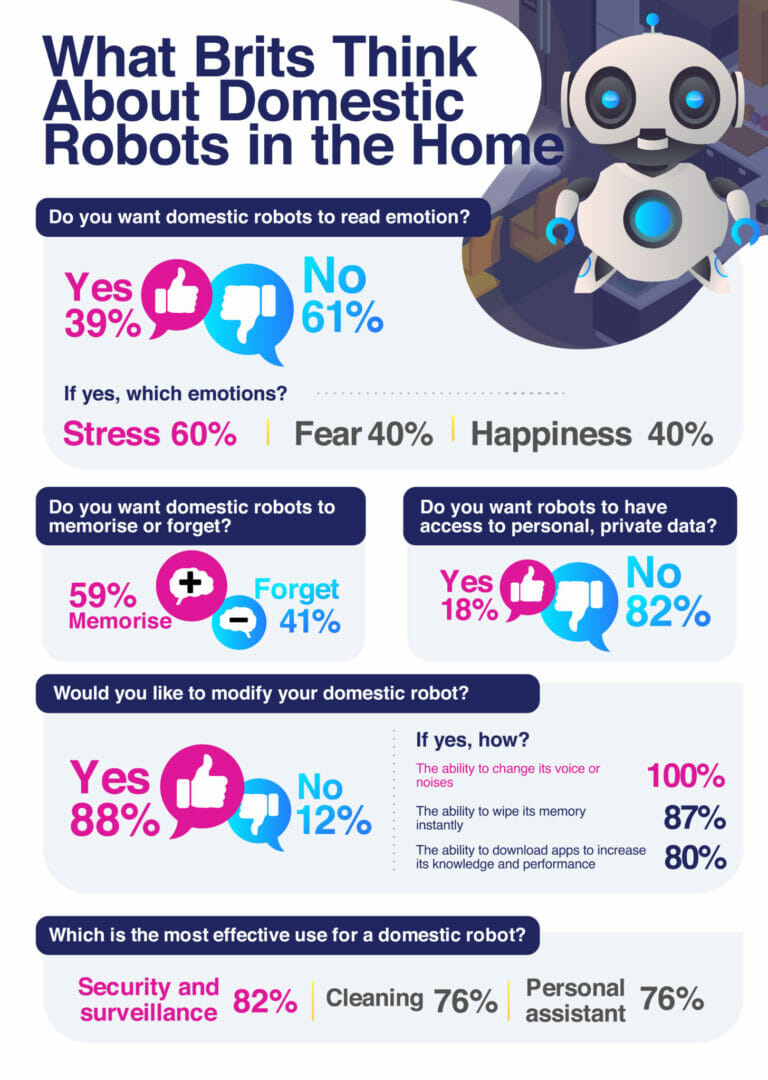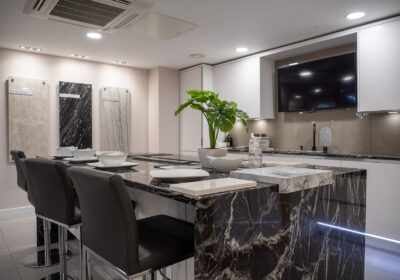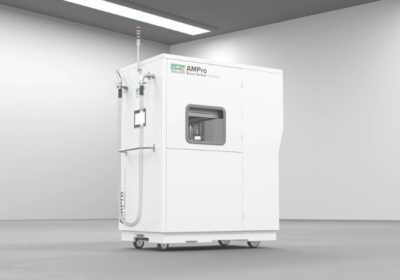- 61% of people do not want domestic robots to read emotion
- 88% of Brits would like the ability to modify their domestic robot
- 39% of Brits would be likely to purchase a domestic robot, if available now
- 82% of people would prefer a domestic robot with gender neutral characteristics
- 82% of people do not want domestic robots to have access to personal, private data
7 in 10 Americans would totally trust a robot to do their chores, according to Yahoo.
But what about Brits? How do we feel about domestic robots*?
To find out, specopssoft.com surveyed 2,424 British consumers. The survey comprised questions on the characteristics of domestic robots; its purpose to identify the elements Brits believe would make one “ideal” for the home.
THE HIGHLIGHTS:
The survey found, if available on the market right now, 39% of Brits would be likely to purchase a domestic robot; while 17% would be very likely and 11% would be very unlikely.
82% of people do not want domestic robots to have access to personal, private data.
61% of people do not want domestic robots to read emotion.
However, 39% agree it would be an asset for domestic robots to read emotion. The following emotions were ranked by Brits as most favourable to be read:
- Stress (60%)
- Fear (40%)
- Happiness (40%)
When it comes to functionality, 59% of Brits would like domestic robots to memorise what they see and do; while 41% of Brits would rather they forget instantaneously.
In terms of physical appearance, specopssoft.com found Brits want domestic robots to:
- Look mechanical (65%)
- Be neutral in colour (53%)
- Have round, soft edges (29%)
- Be small and compact (53%)
Further, 82% of people would prefer a domestic robot with gender neutral characteristics (such as voice), rather than male (6%) or female (12%.)
Specopssoft.com also found 88% of Brits would like the ability to modify their domestic robot. The most favourable modifications were:
- The ability to change its voice or noises (100%)
- The ability to wipe its memory instantly (87%)
- The ability to download apps to increase its knowledge and performance (80%)
- The ability to extend or add different parts (60%)
- The ability to change its “skin” / outer casing (27%)
- The ability to zap or radiate when touched by something unknown (7%)
82% of people think ‘security and surveillance’ is the most effective use for a domestic robot.
Lastly, when asked, which is the most effective use for a domestic robot? Brits answered:
| Security and Surveillance | 82% |
| Cleaning | 76% |
| Personal Assistant | 76% |
| Entertainment | 65% |
| Cooking | 53% |
| Companionship | 35% |
| Guidance and Advice | 24% |
| Healthcare | 18% |
| Childcare | 6% |







